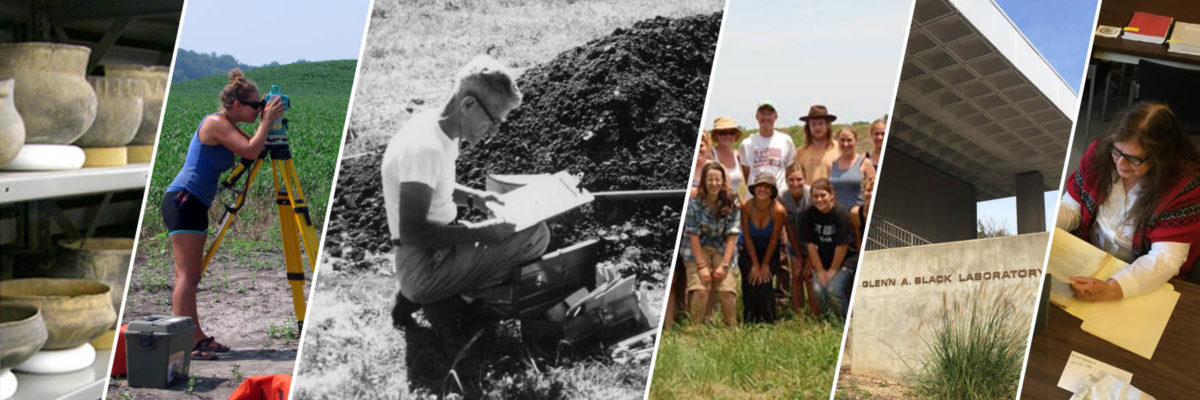The acknowledgements of women working in archaeology has notably flourished in recent memory, but who were the pioneering American women of our profession? For over a century, women have taken on many roles in archaeology with varying levels of professional education and have been successful in contributing to the field. Whether toiling over lab work or excavating great features, these archaeologists have not always been given proper recognition for their work. This session highlights the contributions of several female archaeologists from across the Midwest and brings to light the often undervalued contributions of those who helped make archaeology what it is today. By telling these stories we hope to starts a conversation about the politics of recognition, and inspire others to provide a more complete understanding of women’s influence in shaping archaeology and the Midwest.
Abstract for “Women at Work: Acknowledging Women’s Legacy in Archaeology”
My inquiry into Midwestern female archaeologists began last year when the Indiana Historical Bureau sent a call for papers for their spring conference Hoosier Women at Work in the Sciences. Those of us working at the Glenn A. Black Laboratory of Archaeology (GBL) got pretty excited. We wanted to find a way to participate because we knew that the records we use daily were often written by women. Women made a huge impact on the work accomplished here at the GBL. Thus began our journey…
After submitting my proposal for the conference and getting accepted, I began researching three particular women with strong ties to the collections of the GBL: Ida Black, wife of our namesake Glenn Black; Frances Martin, an aprofessional archaeologist who worked alongside Glenn at archaeology sites for years; and Erminie Wheeler-Voegelin, the maestra who orchestrated the Great Lakes-Ohio Valley Ethnohistory Project. Each woman had differing levels of education, influence, and immersion in their disciplines, but all contributed to growing archaeological and ethnohistorical work in the Midwest.
Ida can be seen in our image collections alongside Glenn at Nowlin Mound in the early 1930s; she was his constant companion throughout their years at Angel Mounds, too. Frances Martin received a college education, but viewed archaeology more as a hobby to enjoy every weekend. Erminie Wheeler-Voegelin held several college degrees and essentially founded the discipline of ethnohistory. Her work and foresight in the 1950s at Indiana University led to the creation of the Great Lakes-Ohio Valley Ethnohistory collection; a documentary assemblage made up of hundreds of primary and secondary documents pertaining to Native American occupancy of the region over three centuries. (It’s what I consider one of the laboratory’s greatest treasures.)

I presented a short talk on these women at the Hoosier Women at Work in Science, Technology, and Medicine in April 2017.
In conjunction to the historical research I was conducting on these women, several coworkers and I utilized the GBL’s image collections to create a photography exhibition showcasing some of the women documented working at past field schools. The online photo exhibit was set up in March 2017.

We couldn’t just stop there, though.
While researching Ida, Frances, and Erminie, I noticed the lack of readily available information on Midwestern female archaeologists. I found published books about old world, classical female archaeologists (think Greek/Roman/Egyptian), some concerning Southeastern and Southwestern American female archaeologists, but very little concerning the Midwest… (See below for a short bibliography detailing these works.)
That, I thought, was a problem.
Luckily, others I work with thought it was a problem too. Leslie Drane, a Ph.D. candidate in the Department of Anthropology at IU, and I coordinated a poster symposium for the 2017 Midwest Archaeological Conference held this past October in Indianapolis. We invited participants from the region to highlight notable women from Indiana, Illinois, Ohio, Michigan, and Iowa. If we couldn’t find published materials about Midwestern female archaeologists, we were going to write them ourselves!
Nine participants created beautiful, thoughtful posters that can now be viewed on an online poster gallery hosted on the MAC website.
This isn’t the end of our inquiry. Several of us would like to submit our biographies to journals or history magazines in order to broaden our audience. Perhaps some other bigs things are in the works too?! Our work is only just beginning…
A bibliography of female archaeologists and resources
- Adams, Amanda. (2010). Ladies of the field: early women archaeologists and their search for adventure. Vancouver: Greystone Books.
- Allsebrook, M. Nesbit, & Allsebrook, A. (1992). Born to rebel : the life of Harriet Boyd Hawes. Oxford [England]: Oxbow Books .
- Browman, David L. (2013). Cultural Negotiations: the role of women in the founding of American Archaeology. University of Nebraska Press.
- Classen, Cheryl. (1994). Women in Archaeology. University of Pennsylvania Press.
- Cohen, G. M., & Joukowsky, M. (2006). Breaking Ground: Pioneering Women Archaeologists. University of Michigan Press.
- Gacs, Ute, et al. (1989). Women Anthropologists: selected biographies. University of Illinois Press.
- Kehoe, Alice B. & Emmerichs, Mary Beth. (1999). Assembling the past: studies in the professionalization of archaeology. Albuquerque: University of New Mexico Press.
- Nelson, M. Cecile, Nelson, S. M., & Wylie, A. (1994). Equity issues for women in archaeology. Arlington, VA: American Anthropological Association.
- Wallach, Janet. (1996). Desert queen: the extraordinary life of Gertrude Bell: adventurer, advisor to kings, ally to Lawrence of Arabia. New York: Doubleday.
- White, N. Marie, Sullivan, L. P, & Marrinan, R. A. (1999). Grit tempered : early women archaeologists in the southeastern United States. Gainesville: University Press of Florida.
- Zeder, Melinda A. (1997). The American archaeologist: a profile. Walnut Creek, California: AltaMira Press.


